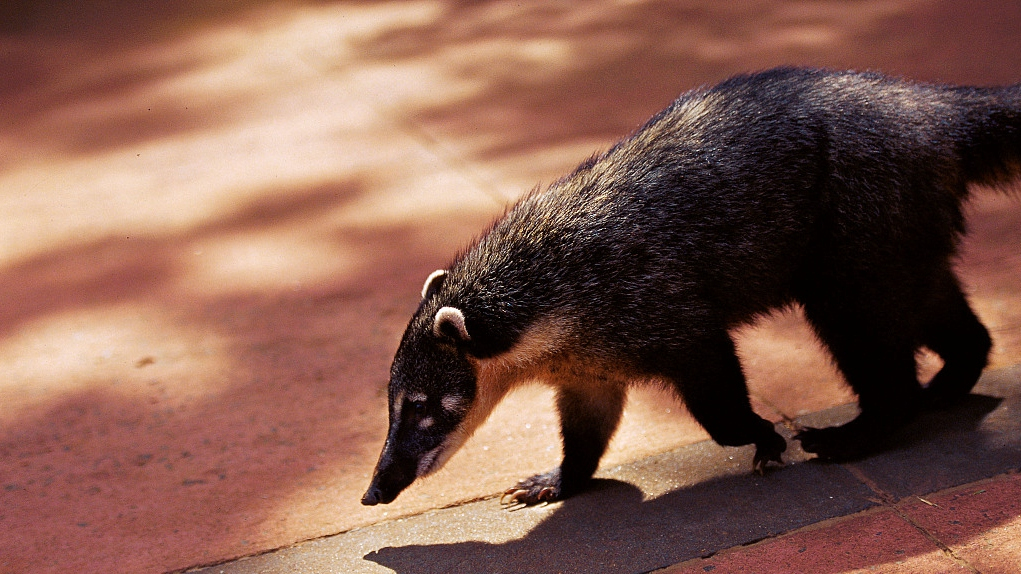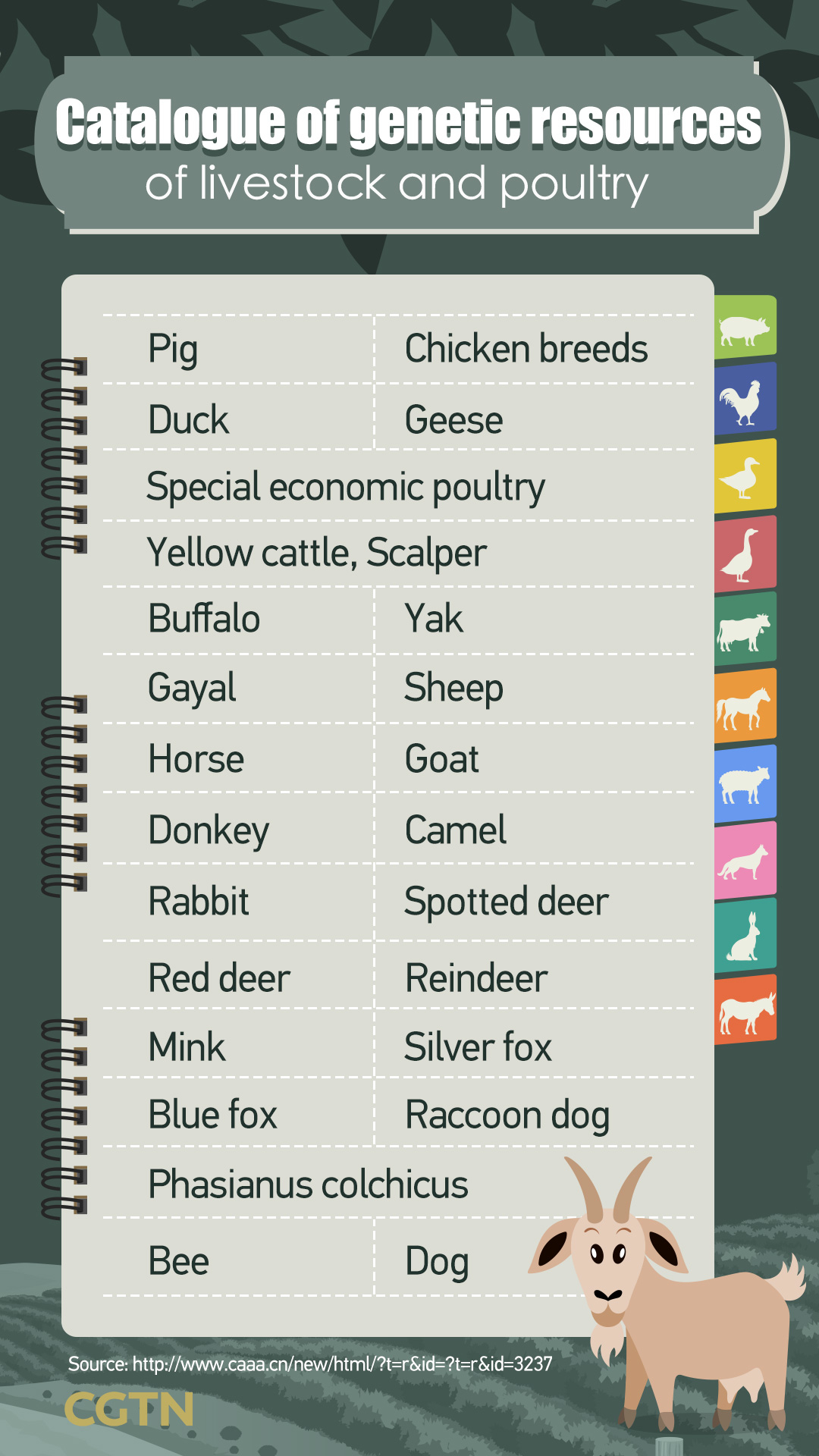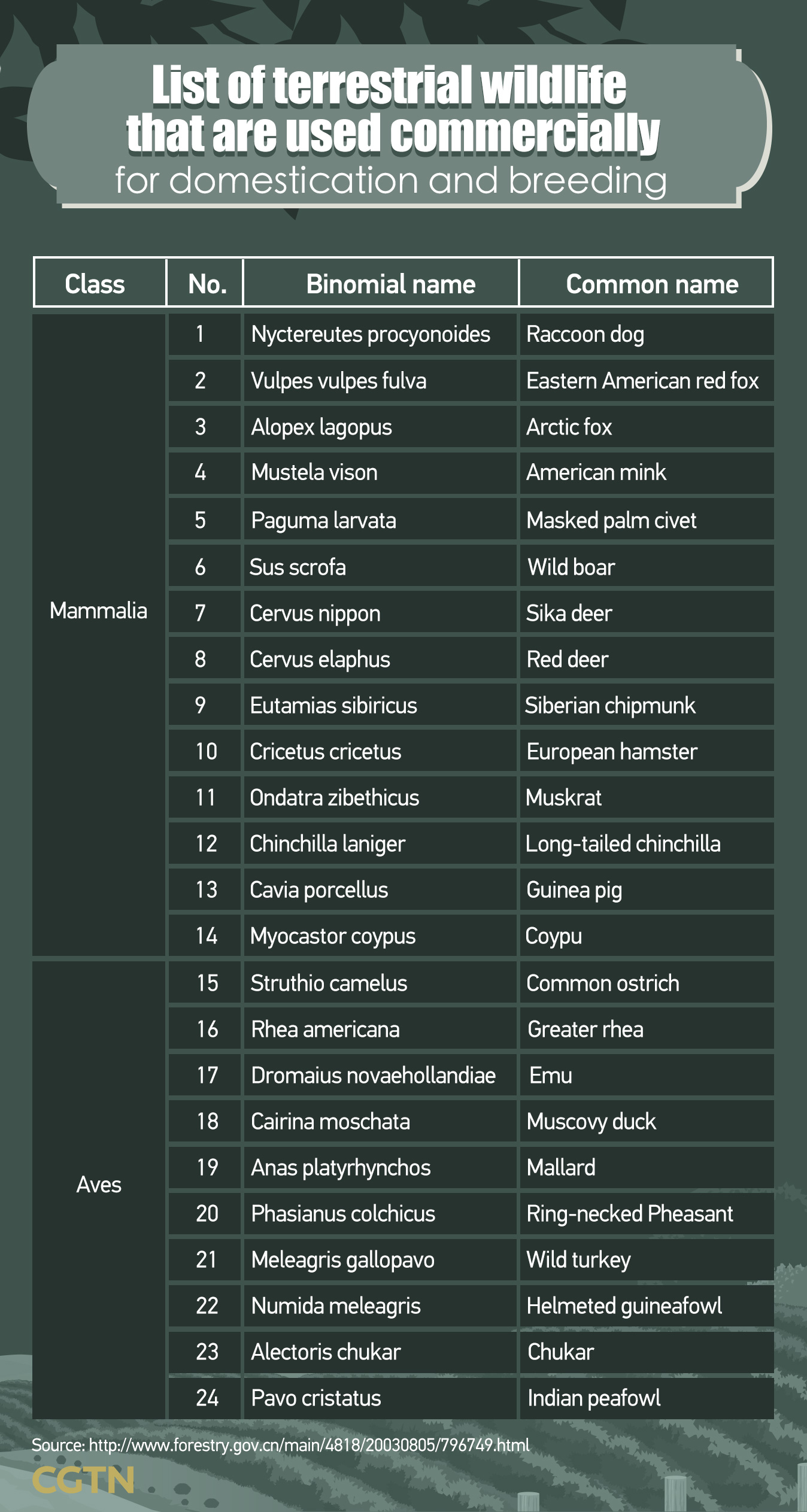China's top legislature, the Standing Committee of the 13th National People's Congress (NPC), has approved a draft decision to ban illegal wildlife trade and eliminate wild game eating.
Read: What you need to know about thoroughly banning illegal wildlife trade
Animals on the 'List of wildlife under state special protection' and 'List of terrestrial wildlife with important ecological, scientific and social values' are prohibited from any forms of trading and consumption.
However, for some domesticated and bred wild animals, not everyone is clear about which one is under the protection and which is not.
CGTN Nature collected lists from government websites relating to the ban, which may offer some clarity.

The civet cat is under the protection of the banning regardless of whether it is wild or domesticated. /VCG
The civet cat is under the protection of the banning regardless of whether it is wild or domesticated. /VCG
'Catalog of genetic resources of livestock and poultry'
The whole catalog of genetic resources of livestock and poultry includes 25 different groups of animals. Breeding, consumption, and other practices are regulated under the animal husbandry law.

Catalogue of genetic resources of livestock and poultry. /CGTN's Liu Shaozhen design
Catalogue of genetic resources of livestock and poultry. /CGTN's Liu Shaozhen design
'List of terrestrial wildlife that are used commercially for domestication and breeding'
The China Business Network (CBN) learned from relevant state authorities that about 54 species of domesticated and bred wild animals are not edible, but are valid for other commercial use. The 54 species of wild animals are under the "List of terrestrial wildlife that are used commercially for domestication and breeding" published by National Forestry and Grassland Administration in 2003, and among them, 13 of the animals were clearly stipulated only for viewing.

List of terrestrial wildlife that are used commercially for domestication and breeding. /CGTN's Liu Shaozhen design
List of terrestrial wildlife that are used commercially for domestication and breeding. /CGTN's Liu Shaozhen design

List of terrestrial wildlife that are used commercially for domestication and breeding. /CGTN's Liu Shaozhen design
List of terrestrial wildlife that are used commercially for domestication and breeding. /CGTN's Liu Shaozhen design
The hard work of completing the amendment
Even though the COVID-19 outbreak has pushed the amendment to the front line, it is not a straightforward work. One of the reasons are the different lists carried out by different departments and levels, which can be confusing to parties involved, including consumers.
The China Business Network (CBN) also learned that the "List of land wildlife under national key protection for captive breeding," which contains only nine species, are implemented at the national level right now.
According to the list, nine species of wild animals – sika deer, red deer, common ostrich, greater rhea, giant Asian pond turtle, Nile crocodile, saltwater crocodile, Siamese crocodile and East Asian bullfrog – have been allowed to breed in captivity.
The new decision on banning illegal wildlife will influence many farmers and relative industries. But it is the way to go until a comprehensive regulation to protect both nature and human interests can be found.
(Cover image is a baby Pallas's cat, which is under second class state protection. /VCG)
(If you want to contribute and have specific expertise, please contact us at nature@cgtn.com)